Is it a Fruit, a Dock, a Frenchman, or Bottled Water?
- Admin
- Sep 16, 2017
- 9 min read
Art is not what you see, but what you make others see.
Edgar Degas
State 14: South Dakota - September 1, 2017
Lori
We woke up at a Walmart in Interior, SD ready for another day of exploration. We began our day with a 120 mile drive East to the state capitol city of Pierre, SD. Upon our arrival, a heated discussion broke out between Nate and I on the correct pronunciation of the capitol city of Pierre, SD. Some of the top contenders included: Pierre, pronounced "PEE-AIR" as in the Frenchman, Perriere, pronounced PEAR-EE-AIR as in the sparkling mineral water, Pear, pronounced PARE as in the fruit, and Pier, pronounced PEER, as in the place where ships dock. We jokingly bickered back and forth for the better part of an hour, attempting to justify our suggestions. All of a sudden an advertisement came on the radio, which said the correct pronunciation. As it would turn out, I was correct with Pier as in the place where a ship docks. Nanny nanny poo poo!!!! Take that Nate! It must be very annoying for the citizens of Pierre, SD to constantly correct out of towner's mispronunciation of their city.
Nate

We made our way across town to the capitol building. While beautiful, the exterior of the building was unremarkable with one exception; the external rotunda was black. Although Lori found it ominous, I thought it was very unique, and added character to the structure. As it turns out, the external dome was made of copper, and the black coloring is the result of exposure to the elements over time. Apparently, the South Dakota Capitol Building is a lot like a woman; they just get better with age. Next, we entered the state capitol and were happy to learn we would not be searched and scanned at the front door. However, our excitement was short lived. We approached the information desk to inquire where the tours start, and were told they were self-guided with a booklet. Seriously? This is the first capitol we visited without a guided tour. I am all for frugality, but cutting the tour guide from the state budget seems a bit ruthless.
With our booklet in hand, we began our tour on the ground floor among 3 massive display cases honoring the states Gubernatorial First Ladies. A couple of capitols we had previously visited displayed dolls of the first ladies inaugural ball gowns, but South Dakota took it a step further. Next to each gown was a picture of the first lady, along with personal information and important mementos. One first lady exhibit, had their family Christmas card displayed. We like state's that honor the contributions of women. Great job South Dakota! Please see the pictures below.
Next, our booklet instructed us to look at the floor, which was a spectacular mosaic of hand laid small pieces of Italian terrazzo tile. It took 66 craftsman 5 years to complete the intricate tile work. Each of the 66 craftsman, were given a single small blue tile to place in the floor wherever they chose. To date only 55 of the 66 tiles have been found. In 1989, the capitol underwent a massive renovation in celebration of the state's centennial. Each of the craftsmen whom performed the restoration on the floor were given a heart shaped tile to place into the floor where ever they chose. It was a fun scavenger hunt looking for the blue and heart shaped tiles throughout the floors of the capitol. We must have looked absolutely ridiculous on our hands on knees crawling around on the floor, but it sure was a lot of fun. Can you find the blue tile and heart shaped tiles in the picture below? Look very closely.
Next, our booklet directed us up an amazing marble staircase, which lead to the building's central room. The apex of the rotunda featured 18 Victorian leaded stained glass wedges flooding the space with natural light. The mosaic tile floor gave way to a series of inlayed green glass blocks allowing the natural light to shine down to the buildings lower level. Please see the pictures below.
Perched upon nooks in the four corners of the central rooms were 4 large bronze statues. The bronzes were created by a South Dakotan artist, and donated to the state in honor of the State’s Centennial Celebration in 1989. Each statue was created to depict the 4 strengths of the people of South Dakota: wisdom, courage, vision, and integrity. Please see the pictures below.
Next, we made our way to the Governor’s office per our booklets instructions. The Governor’s door was a beautiful antique mahogany wood with Victorian stained glass inlays. However, the most remarkable feature of the Governor’s office door was the posted sign which read “Please Walk In”. We have seen 14 Governors doors at this point in our trip, and this is the only one displaying such a sign! We like a Governor with an open door policy! Unfortunately, the Governor was not in his office, but his receptionist was present. Upon entering the office and before we introduced ourselves, the first thing the receptionist said was, “You guys must be traveling to visit all the states”. We were amazed, and very taken back! Either the South Dakota Capitol gets very few visitors besides cross country travelers, or she is just a very intuitive person. Nonetheless, we had a very nice conversation with the receptionist, and she shared with us the history of the Governor’s office. In the far corner of the room was a desk, sofa, 2 side chairs and a coffee table which belonged to the Governor of South Dakota from 1910. Apparently, the current Governor sits at that historic desk when he signs bills into law. Please see the pictures below.
Above the couch in the Governor’s office was a large blank space on the wall, and I decided to make an inquiry. The receptionist explained the painting on the wall depicted imagery that the Native Americans of the state found offensive. In response, they left the painting hanging in it's location, but covered it up with a panel. They did have a book open on the desk revealing the paintings likeness in a 4-inch-wide picture. Please the pictures below.
What to do with offensive but historically significant art is a hot topic all levels of governments are currently grappling with. Whether it’s a painting celebrating the exploitation of the Native Americans, or bronze statues commemorating the victories of Civil War Confederate Generals, Americans are struggling to find a solution regarding the future of such art. Some say such works should be destroyed as they commemorate a disgraceful time in our nation’s history. Others argue we should continue to display such art to learn from the past to ensure history does not repeat itself. Throughout our cross country trip, we are finding most governments are settling somewhere in the middle. For example, the Minnesota Government has taken a painting deemed offensive to Native Americans out of the Governor’s office, and displayed it in a less prominent location within the capitol. Other governments, such as South Dakota, have chosen to preserve, but cover up their offensive Native American paintings. I don’t believe there is a one-size-fits-all answer to this issue, and will likely require each municipality to determine what works best for them. Perhaps the solution is to establish an “offensive museum” in each state where one can go to view such work. However, I am a big proponent of preserving history, so future generations may learn from the struggles of our past. It is one thing to read about the horrors of slavery in a history book. However, it is an entirely more powerful and enlightening experience to actually stand in a slaves decrepit dwelling, and experience the atrocious conditions with one’s own senses. One of the most rewarding aspects of my cross country trip has been witnessing firsthand the good, bad, and the ugly of America's history, and the destruction of such art will deprive future generations of the same opportunity!
After leaving the Governer's office, our booklet sent us up the grand marble staircase to the top floor of the capitol. Usually the pictures of the past State Congresses are framed and hung on the wall of the capitol. South Dakota had a very unique approach, and displayed the pictures in what I can only describe as a poster display one would find in a retail store. Albeit very unusual, the display did effectively free up a lot of wall space, while allowing the public to view the legislators of the of the past. Next, our booklet instructed us to visit the Senate and House Chambers. While both were beautiful, there were otherwise unremarkable. We did come across the most ornate and massive marble water fountain either of us had ever seen. It was worth a picture since it was ridiculously over the top. Please see the pictures below.
Upon leaving the capitol, we drove across town to the South Dakota Cultural Heritage Center, aka State's Museum. The outside of the building was very unique as it was literally built into the side of a hill. Admission was free which was very nice to see! The museum was divided into 3 galleries: The ways of the people, Proving up, and Changing times.
We began with The way of the people gallery, which depicts the Sioux Native Americans way of life. Although the entire gallery was pitch black from the outside, upon opening the door, the entire gallery lit up brilliantly. This was the first state's museum we visited where the lights were on motion activated sensors. This preserves the artifacts, cuts down on the electric bill, and helps preserve the environment. Good job South Dakota! Upon entering the state's museum, the first thing we saw was a huge round rock about 3 feet in diameter in the middle of the walkway. To make things even more peculiar, there was no explanation why the rock was there, and there was a human hand print etched into the boulder. Not knowing what else to do, I put my hand on the hand print of the boulder hoping something, anything would happen, but regretfully nothing did. How cool would it have been if a hologram appeared, or a video started playing! I was really disappointed! The least they could have done was provide a bottle of hand sanitizer nearby. Clearly it was time to move on. Please see the pictures below.
The museum possessed an extensive collection of Native American artifacts to the likes of which we had not previously seen on our trip. Please see the pictures below.
One of the most interesting displays included a description and example of how the Native Americans keep track of time. While Americans measure time in hours, days, weeks, minutes, decades, and centuries, the Sioux track time in terms of nights, moons, winters and generations. The passage of a single winter was marked by one special event. One person within the tribe was designated as the keeper, and was tasked with creating the symbols and sharing the stories of the past called a count. The count pictured below depicts a winter count from 1800-1871.
Another interesting display featured carved wood sculptures depicting a horse. Only Indians who had lost a horse in battle were allowed to carve one to memorialize their fallen friend. The horse sculptures below were made to commemorate 2 horses which died in the Battle of Little Bighorn.
Next, we proceeded to the next gallery called Proving Up, and featured the story of immigration into the Dakotas. This gallery displayed: the cab of a 19th century train which showed a silent movie inside, a 19th century homestead, and a gold mine depicting the Black Hills gold rush of the 1870’s. Please see the pictures below.
The South Dakota State Constitution was on display within this gallery, which I am always very happy to see. It sends a poignant message when a state publicly displays the very document guaranteeing the liberties of their citizens. Regretfully, too many states keep their constitution locked away in their archives. However, they manner by which South Dakota displayed their Constitution was extremely disturbing. The state's constitution was displayed in what appeared to be a plexiglass case precariously balanced on the edge of a guardrail! All it would take is one person to lean on that constitution's case and “down will come baby cradle and all”. This display clearly needed to be re-designed before irreversible damage in done to this essential South Dakotan document! Please see the pictures below.
Next we headed to the final gallery called Changing Times: South Dakota in the 20th century. The displays exhibited the primary industries of the South Dakota economy today! An early 20th century home, 1930’s general store, and 1920’s gas station were all represented. With miles upon miles of grassland prairies within the state, it is not surprising ranching is a large part of the state’s economy. We liked how they wrapped the barb wire around the ranching sign, which is pictured below.
However, the most interesting display was a milk the cow race. Here is how it works! You approach a large life size rubber cow, sit on the stool and squeezed its utters. On the wall across from you is a TV screen with a farmer milking a cow. Not surprisingly, the virtual farmer beat Lori and I over and over again! Oh, the agony of defeat! Please see the pictures below!
Out of the corner of our eye we saw a street road painted on the floor of the museum, and decided to see where it lead. After following the road all around the museum, we were led up a flight of stairs to an observation deck offering a beautiful view of the South Dakota Capitol Building. Please see the pictures below.
I was extremely excited to learn the museum was featuring a special exhibit of South Dakotan quilts! Although Lori says it makes me sound like a metrosexual, I believe quilts are more than something to throw on a bed, they are functional works of art. I have a great appreciation for their intricacy and beauty, not to mention the time and patience it takes create a quality quilt. I have actually started making one of my own! Many of the quilts on exhibits were from the 1850’s, and in remarkable condition. One of the quilts on display from 1846 was rescued from an abandoned general store, which was scheduled to be demolished! Please see the pictures below!
After leaving the South Dakota Cultural Heritage Center, we drove 86 miles East to a Walmart in Chamberland, SD to spend the night.



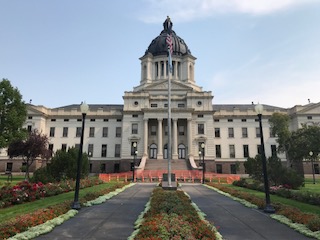
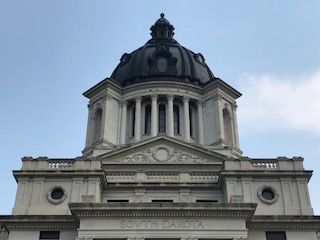
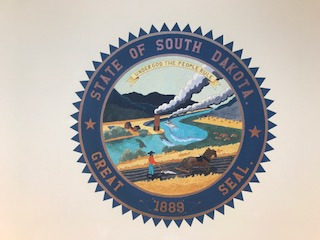









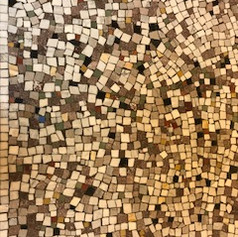






































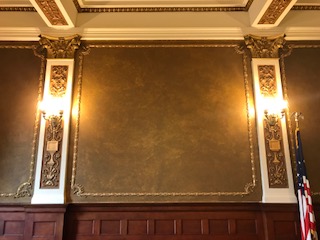
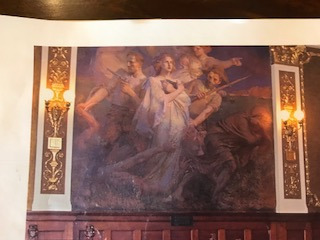

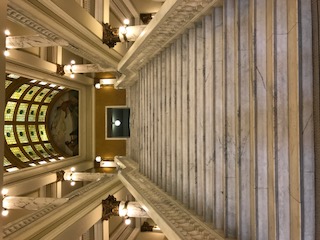

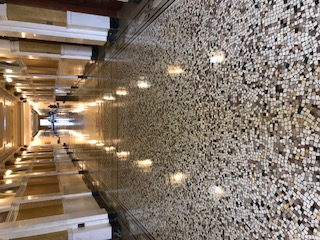
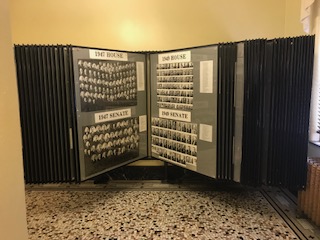

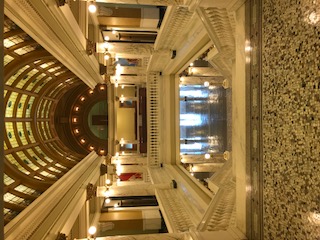
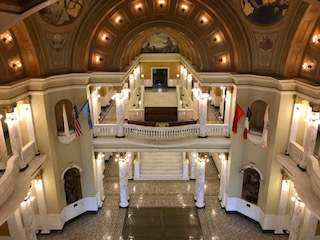
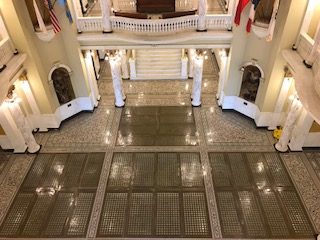
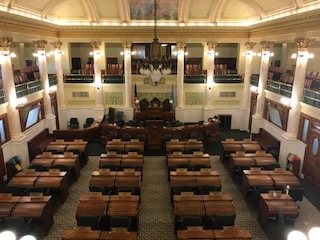
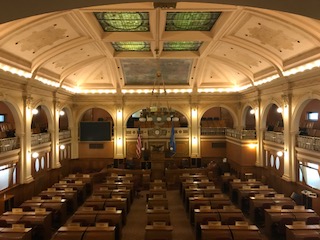

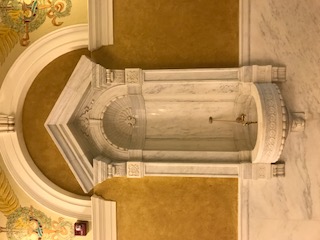


























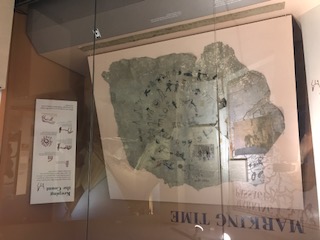

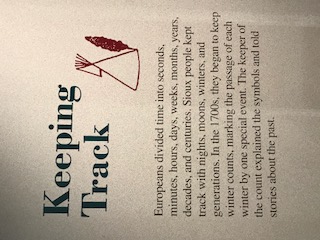

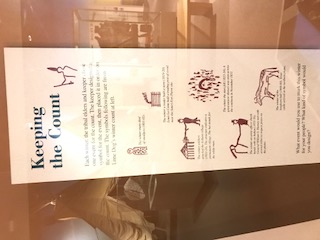

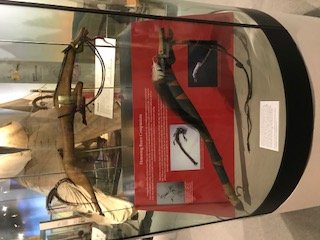
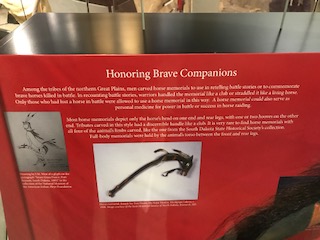

















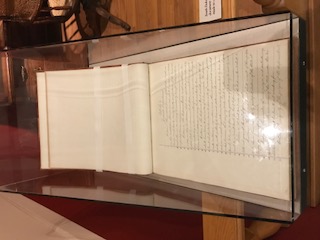
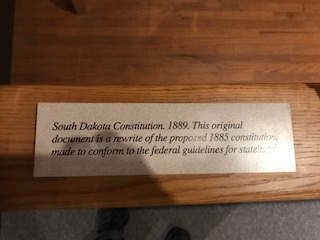
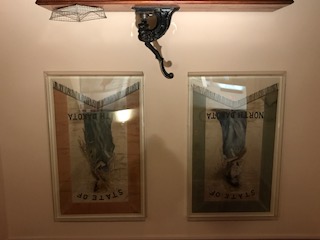











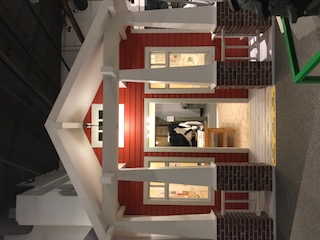

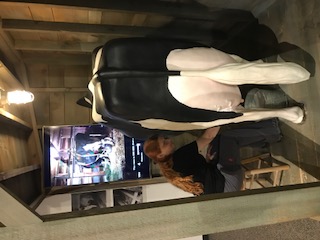

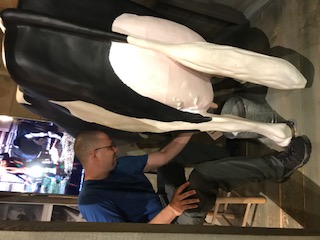



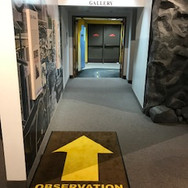







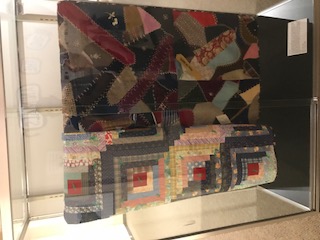

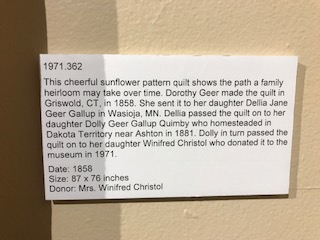

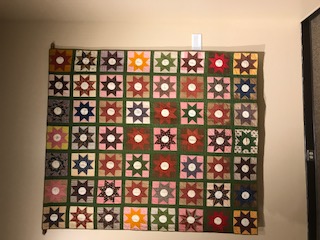
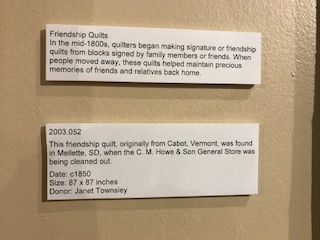

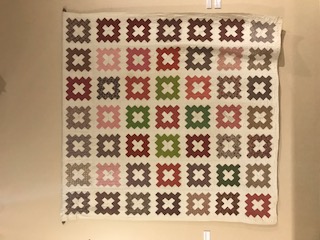
Comments